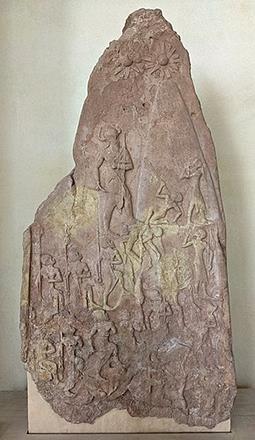
From Sinew To Horn: The Rise Of Composite Bow In Ancient Warfare
Widely used during the Bronze Age, these weapons evolved over time, with significant advancements in their design and functionality.
Iconographic evidence traces the development of bows from the mid-third to the mid-second millennium BCE.
Scholars have studied the transition from simple to composite bows, highlighting key advancements.
"The second type of simple bow, known as the double-convex or sinew-reinforced bow, gets its name from its distinct shape," explained Professor Aaron Burke.
"The bow's arms curve slightly forward before bending backwards towards the string, creating what is known as a recurve. This improvement was made possible by reinforcing the bow's wooden arms with sinew to prevent breakage."
The next major advancement was the composite bow, achieved by adding a horn to the other side of the double-convex bow.
"Thanks to the tensile strength of the composite bow, the arms bent backwards when unstrung, a characteristic known as a reflex," Burke noted.
"The Ugaritic term for the bow was qastu. This construction illustrates the crucial role of horn and sinew, with the wood serving merely as the foundation for these materials."
Experiments with the composite bow have shown that under controlled conditions, four different bow weights could launch projectiles weighing between 25 and 90 grammes over distances ranging from 109 to 221 metres.
The effective range of these bows was between 100 and 200 meters.
Burke pointed out that the best evidence for the use of composite bows in the ancient Near East comes from numerous arrowheads of varying weights and designs.
These allowed archers to choose between heavy arrows for short-range armour-piercing or lighter arrows for long-range harassment. The use of heavier arrows is supported by depictions of Amenhotep II and other New Kingdom pharaohs, shown firing arrows (likely bronze) through thick copper targets with composite bows.
"The composite bow was also employed for rapid firing of lighter arrows, with modern experiments suggesting that an expert archer could shoot around thirty arrows in just three minutes," Burke noted. "In northern Mesopotamia, the composite bow likely replaced the simple bow as early as the Early Bronze Age."
One significant depiction of the composite bow is found in the pre-Sargonic palace at Mari (circa 2300 BCE), where the double-curved reflexed composite bow is shown.
Yadin referred to this as the“Scythian bow” because it was previously associated with the Scythians of the late Iron Age.
Further evidence for the composite bow includes depictions of fragments of Akkadian stelae.
One such stele shows Naram-Sin depicted as a god, holding a composite bow and a battle axe in his left arm.
Another broken stele, possibly from the reign of Sargon or Naram-Sin, portrays a soldier using the composite bow in combat.
Secondary archaeological evidence for the bow includes arrowheads and the casualties they caused during the Middle and Late Bronze Ages.
"Although arrowheads from Anatolia and Mesopotamia from these periods are abundant, evidence for the use of either the simple or composite bow in the Levant during the Middle Bronze Age remains ambiguous," Burke said.
"However, based on comparative evidence from other regions, it seems likely that many of the smallest spear or lance points in the Levant should be reclassified as arrowheads."
Burke concluded that if this hypothesis is correct, the arrowheads used in the Levant during this period were essentially similar in shape to thrusting weapons, complicating their identification.

Legal Disclaimer:
MENAFN provides the
information “as is” without warranty of any kind. We do not accept
any responsibility or liability for the accuracy, content, images,
videos, licenses, completeness, legality, or reliability of the information
contained in this article. If you have any complaints or copyright
issues related to this article, kindly contact the provider above.


















Comments
No comment